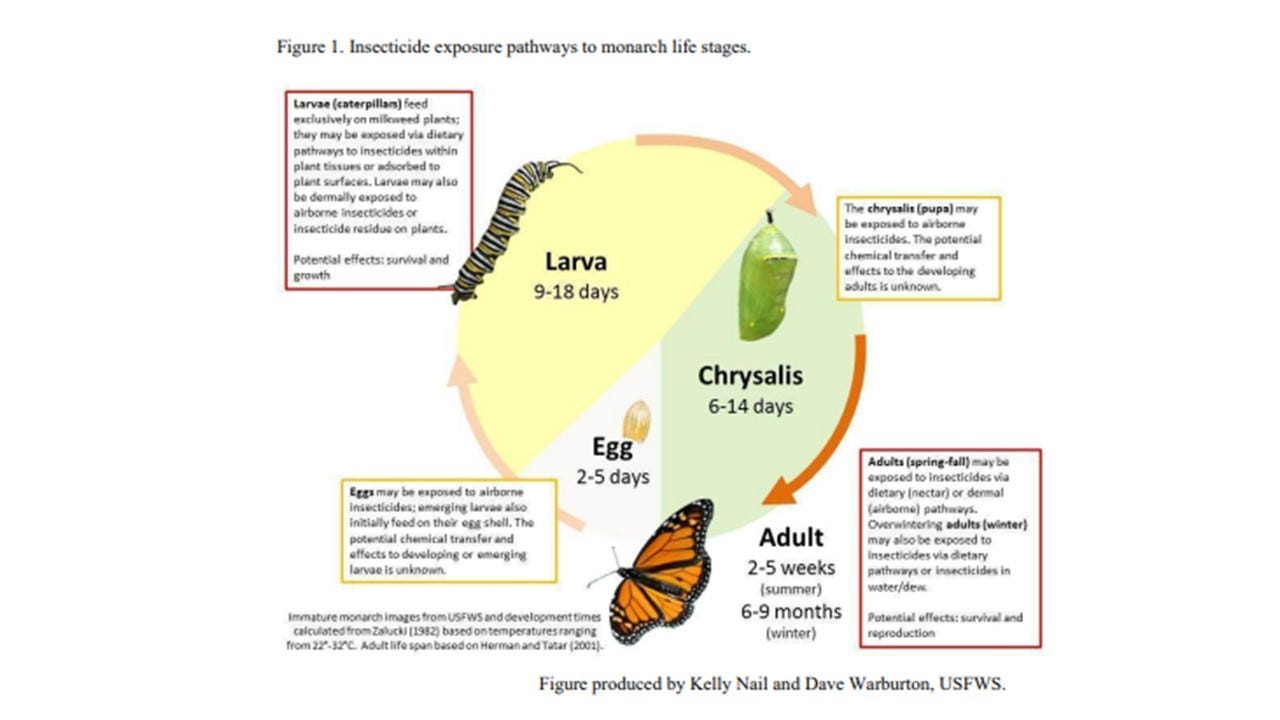Monarchs of the Sky
The Monarch Butterfly is a symbol of the connectivity of our environment in our hemisphere yet we are ignoring its demise

The Monarch butterfly is one of the most beautiful creatures in the world. It can be found throughout North America, and its wings are adorned with orange, black and white markings. There are almost as many stories of butterflies that are a part of Native American culture as there are Native Nations.1 Unfortunately, the Monarch butterfly is in danger of becoming extinct. It’s numbers have declined 80% in the last three decades. There are a number of reasons for this, but the main one is habitat loss. If we want to save this beautiful creature, we need to take steps to protect its habitat.
Jemez Pueblo, Carol Lucero Gachupin
The Monarch butterfly's main habitat is in the western United States, specifically in California. However, the Monarch butterfly population has declined by more than 90% in the last 20 years. This is due to a number of factors, but the primary one is loss of habitat. Monarchs need specific types of plants to lay their eggs on and to feed their caterpillars. Unfortunately, many of these plants are being destroyed as humans develop more land. This leaves the Monarch butterfly with nowhere to lay its eggs and nowhere to find food.
In addition to habitat loss, the Monarch butterfly is also threatened by pesticides. Many farmers use pesticides on their crops in order to kill insects that might damage them. However, these pesticides also kill Monarch butterflies and other beneficial insects. As a result, the Monarch butterfly population has declined even further.
There is a promising recovery as you can see in the chart of data collected over almost two decades but it will take vigilance to ensure the trend of decline is reversed.
Are there any real legal protections?
In July 2022, the International Union for Conservation of Nature (IUCN) re-classified the migratory monarch butterfly as endangered on its “red list” from its previous status as “declining”. 2 The ICUN can raise the profile of the need for protection, but the action is merely informational and not legally binding.
The Monarch is not listed under the Endangered Species Act, administered by the U.S. Fish and Wildlife Service, and awaits a formal proposal3 which may come in 2024. Monarchs that winter in California are not listed as threatened or endangered under the California Endangered Species Act (CESA), where the are suffering a steeper decline in comparison to the Monarchs that overwinter in Mexico.
Insecticides and Pesticides
The Fish & Wildlife Service has identified pesticidal risks to Monarchs that may be a leading cause of the decline of milkweed but also the systemic contamination of food sources of the Monarch at all stages of life.
Systemic: Monarchs may be exposed via dietary pathways to insecticides that become incorporated into plant tissues (e.g., leaves, pollen, nectar). Although numerous insecticides may be systemic to some degree, neonicotinoids in particular are known for this characteristic, and are expressed throughout the plant including nectar and pollen of treated crops and plants (Goulson 2013).4
Neonicotinoids are pesticides that target the nervous system of insects and have a nicotine-type effect. These insecticides were developed “To reduce toxicity to mammals and increase toxicity to insects [so] neonicotinoid compounds have been selected that are highly specific for subtypes of nicotinic receptors that occur in insects.” This is particularly dangerous because it targets all insects and cannot target only harmful ones. In addition to Monarchs, these insecticides are harmful to bees and other pollinators.
Killing Monarchs is an “Unreasonable Adverse Effect”
The standard for FIFRA is simply that the pesticide benefit should outweigh the harm, and no one seems to have identified these harms.
Under the Federal Insecticide, Fungicide and Rodenticide Act,5 a pesticide can only be registered if the applicant can demonstrate that using the pesticide according to specifications "will not generally cause unreasonable adverse effects on the environment.''6 FIFRA does not prohibit insecticides that do harm, because they are designed to do harm; but FIFRA does require the benefit outweigh the harm.
FIFRA narrows the definition of “unreasonable adverse effects on the environment” to those effects primarily harming humans. FIFRA defines ''unreasonable adverse effects on the environment'' to be:
''(1) any unreasonable risk to man or the environment, taking into account the economic, social, and environmental costs and benefits of the use of any pesticide, or
(2) a human dietary risk from residues that result from a use of a pesticide in or on any food inconsistent with the standard under section 408 of the Federal Food, Drug, and Cosmetic Act.''
The economic costs of losing pollinators is immeasureable as well as the social cost of losing the Monarch. Understanding the social value might simply be done by considering the number of butterfly conservatories that are cherished around the world,7 with the Monarch being at the top of the list of favorite butterflies.
EPA’s notice of its cost-benefit weighing of allowing neonicotinides to be permitted under FIFRA, demonstrated they would not be requiring any mitigation for the costs to pollinators. EPA summarized:
These benefits assessments will help EPA evaluate the impacts of potential measures to reduce certain risks to pollinators identified in previously issued preliminary pollinator risk assessments. EPA is not proposing any mitigation at this stage, and anticipates that early input and information from the public on the benefits of these compounds will be helpful as EPA evaluates and considers the risks and the benefits of the neonicotinoid insecticides.8
These insecticides will be reviewed again in 2024 and there is much more data available for the cost-benefit evaluation than in 2008 when the first neonicotinoids were evaluated. Anytime you alter the environment, whether it is dumping pollution or bringing in an invasive species to kill another one, the costs are often unforeseeable, the consequences undoable.
FIFRA’s harm standard was created in the 1970s, and over this past half century, the biotechnology revolution has created options that may be better than pesticides that just attack the nervous system, one of the oldest mechanisms to kill insects. The use of sterile mosquitoes to stop the propagation of mosquitos was an exquisite solution to a problem that was singularly targeted at the insect causing the damage. They were even classified as pesticides under FIFRA. All this tells us there are alternatives, and FIFRA does not require an applicant to disclose better alternatives that cause less damage to the environment. This should be an additional requirement in an amended version of FIFRA, in addition to the cost-benefit weighing, but that standard should no longer be determinative. The rush to make as much money as possible with this low standard is understandable in a capitalistic objective for the private sector, but it is the role of government to protect the citizenry and increasingly so, the environment from other competing interests that come at the expense of our very future.
The unintended consequences of trying to increase our food supply by killing harmful insects, will instead make great strides in destroying the pollinators, which make our very food supply possible. Pollinators like the Monarch.
http://butterfly-lady.com/native-american-legends-of-the-butterfly/
https://www.iucn.org/press-release/202207/migratory-monarch-butterfly-now-endangered-iucn-red-list
https://www.fws.gov/initiative/pollinators/monarchs
https://www.fws.gov/sites/default/files/documents/Monarch-SSA-Pesticide-Supplemental-Materials.pdf
7 U.S.C. §136 et seq. (1996).
https://www.epa.gov/laws-regulations/summary-federal-insecticide-fungicide-and-rodenticide-act
https://en.wikipedia.org/wiki/List_of_butterfly_houses
https://www.regulations.gov/document/EPA-HQ-OPP-2008-0844-1260






That’s so good of you!
We have milkweed growing in containers, solely to help these beautiful butterflies! They are truly magical creatures.